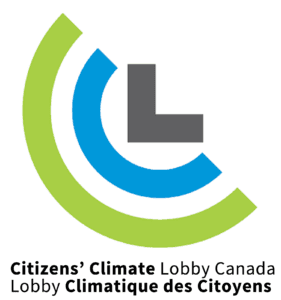Canada now has a pan-Canadian climate policy. Details are still being worked out. CCL will continue to lobbying for fair and effective carbon pricing. Below are guidelines for what we consider acceptable: (1) Science-based targets must be enshrined into national law. (2) Any policy must include a national carbon price that is integrated across the country. It must be significant enough to drive changes in behaviour. We recommend this price be $30/tonne of CO2 equivalent by 2018,4 the price that is currently in place for BC and will be introduced in Alberta in 2018. For provinces with a lower carbon price or no carbon price, a federal carbon tax must be implemented. (3) To be effective at reducing emissions the carbon price needs to rise substantially every year. A steadily rising price provides a predictable market signal to drive innovation so that we meet or exceed our emissions target. We recommend a rate of increase of at least $10/tonne per year.[1] (4) The price should cover the entire economy and all GHG emissions, including upstream methane from oil and gas production. There should be no tax-exempt sectors. The best way to ensure this is to have the carbon price applied as far upstream as possible and at our borders where goods enter the Canadian economy. (5) A carbon pricing system needs to be fair for current and future generations. A fair carbon pricing system must ensure that costs and benefits are distributed equitably. A direct dividend to households would protect low and middle income households from higher costs, and would help build the support needed for a rising carbon price. (6) The carbon pricing system should be fully transparent and as simple as possible so that it cannot be “gamed” by special interests. The plan needs to be based on sound science and backed by quantitative analysis. It should include independent monitoring, evaluation and adjustment mechanisms. (7) Concerns about carbon pricing impacting international competitiveness can be addressed by the use of border adjustments for jurisdictions without a similar carbon price.[2] (8) Subsidies to the fossil fuel industry should be eliminated in order to focus on transitioning to a low-carbon economy. Examples of direct subsidies are capital cost allowances, tax relief, and government agencies that promote fossil fuel use and development. Federal and provincial direct subsidies are estimated to be $2.9 billion CAD for 2014.[3] (9) Any carbon pricing policy needs to be woven into a larger climate policy that includes broader regulations (e.g., building codes, fuel efficiency standards, land use policies), green infrastructure, incentives, financial mechanisms (e.g., green bank and green bonds), job re-training for workers in the fossil fuel sector, and education programs (e.g., how personal choices, including the food we eat, impact the climate). (10) Canada must provide global leadership on fighting climate change, including supporting the transition from fossil fuels in developing countries and helping those most vulnerable to adapt to changing conditions. FOOTNOTES [1] Economic modelling by Navius Research shows that a price of $100/tonne by 2030 is not enough to meet the current target of 524 Mt CO2e in 2030, suggesting a larger carbon price is necessary, especially since the current target is inadequate for Canada’s fair-share contribution to the Paris agreement. See figure 7 in:http://ecofiscal.ca/wp-content/uploads/2016/04/Ecofiscal-Commission-Choose-Wisely-Carbon-Pricing-Revenue-Recycling-Report-April-2016.pdf The suggested price of $30 a tonne in 2018, rising by $10 a tonne per year, will reach $150 in 2030. [2] See https://cclca.wpengine.com/laser-talks/border-tax-adjustments/ [3] Touchette, Yanick & Whitley, Shelagh. G20 Subsidies to the Oil, Gas and Coal Industries, (2015).
https://www.odi.org/publications/10091-G20-subsidies-oil-gas-coal-production-Canada
LASER TALK: Our Guidelines for Canada’s Carbon Pricing Policy
Home » LASER TALK: Our Guidelines for Canada’s Carbon Pricing Policy







